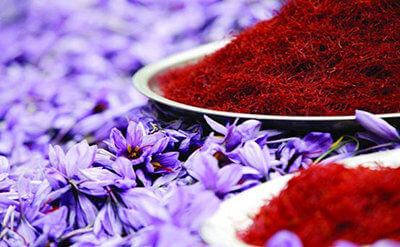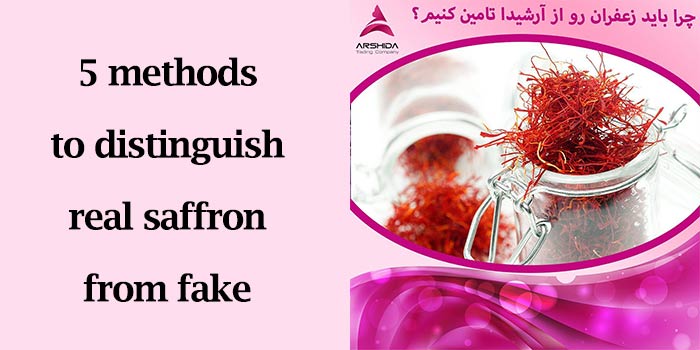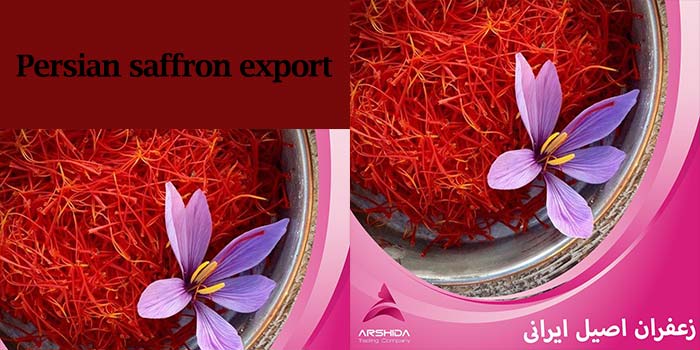
Minakari the art of heaven
فوریه 25, 2020
Crocetin and Crocin From Saffron in Cancer Chemotherapy and Chemoprevention
ژوئن 30, 2020Iran Arshida Saffron
Saffron
Arshida Saffron : Saffron is a spice obtained from the dried stigma of the flower of saffron crocus (Crocus Sativus). Saffron is native to Iran and is considered as the world’s most expensive spice.
Until 1970, Spain was the major producer of saffron with 60 tons production per year.
Spain also, had experienced the production of 120 tons in 1930. Upon the increase in wages and other factors, cultivation of saffron in Spain declined to the point that today, only around 165 hectares of saffron farms have remained.
However, its production of 14 kg/Ha is the highest globally.
A study conducted in Spain shows that the yield of irrigated saffron increases up to 18 to 19 kg/Ha, while the average production for dry farming is 9 kg/Ha.
One of the main reasons for decreasing the cultivation area in different countries is the fact that cultivation and harvesting of saffron and also the processing are very labor intensive.
For the moment the mechanization of cultivation, harvesting and separating the stigma from petal is not possible. Hence, all these operations need the human work-force and this causes an increase in the cost.
For one kg of dry saffron we should harvest 78.5 kg of Saffron flowers, meaning about 170,000 flowers handled by workers.
Due to high rate of human’s wage in the countries such as Spain, Italy and Greece the production of saffron is not economical comparing to Iran ( Arshida Saffron ).
Changes in climatic conditions have also affected saffron cultivation in some regions.
Saffron environmental requirements are as follows:
– Snowy winters and dry and hot summers
– 300 mm of rain during the growth period
– Temperature ranging from a minimum of -18°C to a maximum of 40°C.
– Latitude from 32 to 36° north and up to 1,000m above sea level. The production rate of saffron in Iran has grown in the past 20 years. Overall, the cultivation of Saffron in Spain and Italy, which in the past were considered as two major producers, has decreased (Studying the last 50 years)
Now more than 96% of the worldwide saffron production comes from Iran ( Arshida Saffron ).
However, the share of Iranian saffron in the international market is about 70%. India, after Iran is the biggest producer of saffron.
The export trends for the period 2015-2018 indicate that Iran, with a rate of 70%, is the major exporter of saffron in the world.
The global trend of saffron export shows that there is a direct relation between the increase of
saffron export from Iran and the overall increase of saffron export in the world.
This confirms that Iran is the main supplier of saffron in the world.
This is explained by the fact that other exporting countries basically buy saffron from Iran and then re-export it to other countries. In 2018, Iran has exported 280 tons of saffron with a worth of $351 Million.
The export value of saffron in Iran experiences several fluctuations due to change in custom and fiscal rules.
As an example in 2009, some facts mentioned below have caused a considerable increase in the export value in the next year, 2010:
- In 2009, the value of exported saffron was 3,500 USD per Kg that encouraged the exporters to increase the volume of export in the next year. Hence, this led to an increased export value in
- Tax exemption of the exported goods, which was an incentive for exporting more.
- Financial tools such as loans for the exporters.
The UAE is the second major exporter of saffron after Iran.
Few data are available, however we estimate that 90% of the saffron imported to UAE is re-exported to India, China and Persian Gulf countries, Far Asian countries and even Europe.
95% of saffron is imported from Iran. Free trade zone as well as proper export facilities, and economic stability have made UAE a major hub for saffron trade.
effective participation in saffron trade has directed other countries to trade Iranian saffron and to generate more added values.



